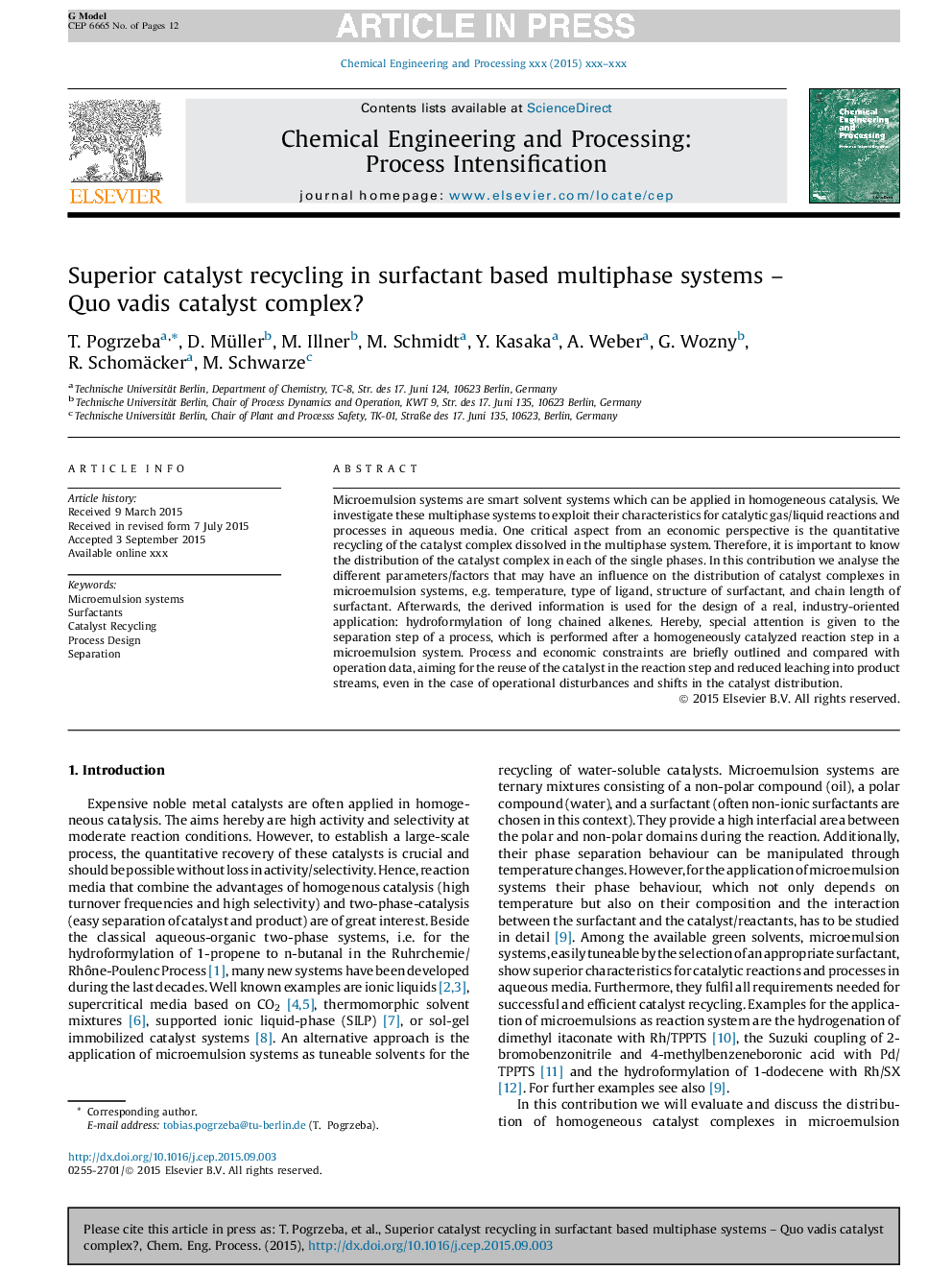| Article ID | Journal | Published Year | Pages | File Type |
|---|---|---|---|---|
| 7089907 | Chemical Engineering and Processing: Process Intensification | 2016 | 12 Pages |
Abstract
Microemulsion systems are smart solvent systems which can be applied in homogeneous catalysis. We investigate these multiphase systems to exploit their characteristics for catalytic gas/liquid reactions and processes in aqueous media. One critical aspect from an economic perspective is the quantitative recycling of the catalyst complex dissolved in the multiphase system. Therefore, it is important to know the distribution of the catalyst complex in each of the single phases. In this contribution we analyse the different parameters/factors that may have an influence on the distribution of catalyst complexes in microemulsion systems, e.g. temperature, type of ligand, structure of surfactant, and chain length of surfactant. Afterwards, the derived information is used for the design of a real, industry-oriented application: hydroformylation of long chained alkenes. Hereby, special attention is given to the separation step of a process, which is performed after a homogeneously catalyzed reaction step in a microemulsion system. Process and economic constraints are briefly outlined and compared with operation data, aiming for the reuse of the catalyst in the reaction step and reduced leaching into product streams, even in the case of operational disturbances and shifts in the catalyst distribution.
Related Topics
Physical Sciences and Engineering
Chemical Engineering
Process Chemistry and Technology
Authors
T. Pogrzeba, D. Müller, M. Illner, M. Schmidt, Y. Kasaka, A. Weber, G. Wozny, R. Schomäcker, M. Schwarze,
